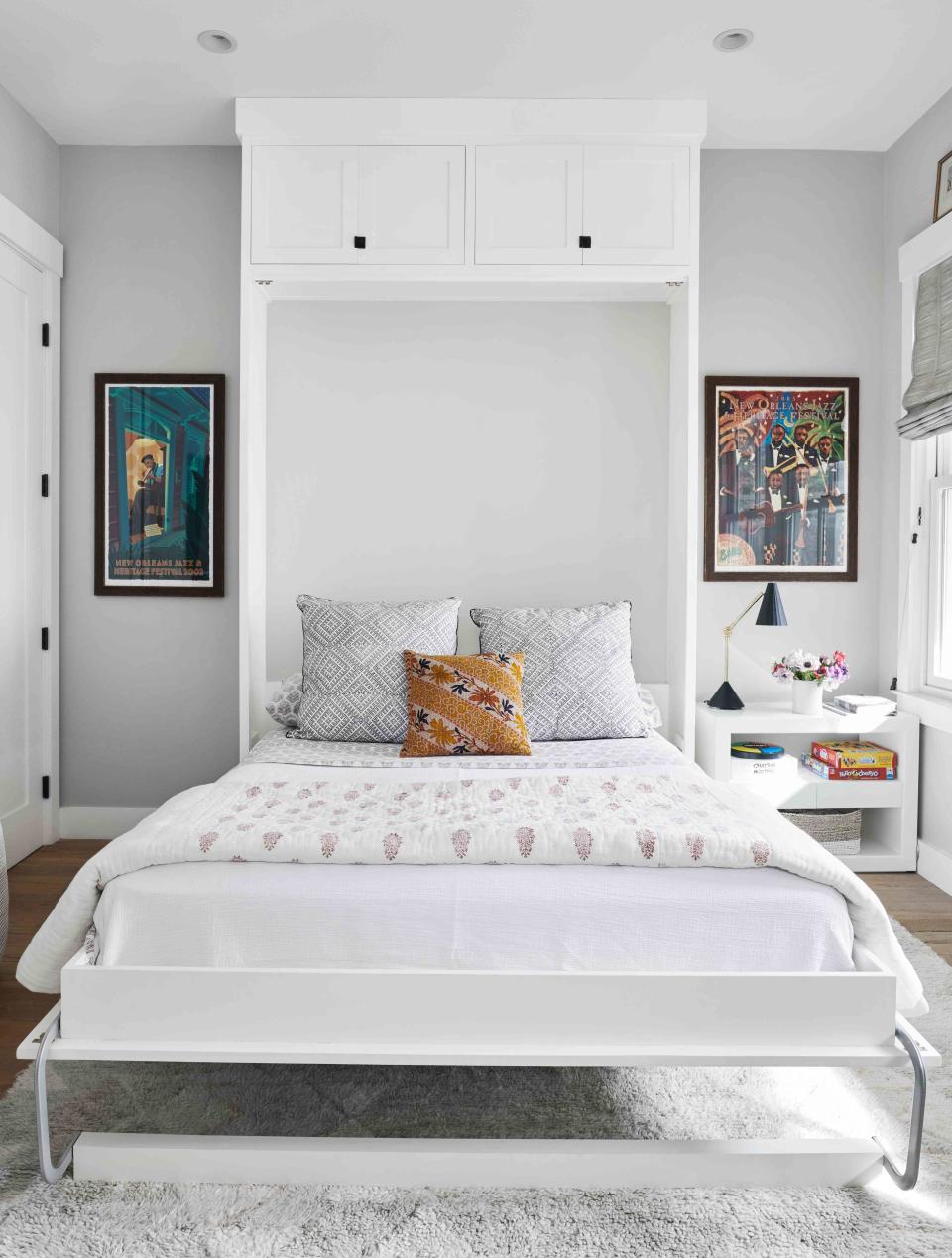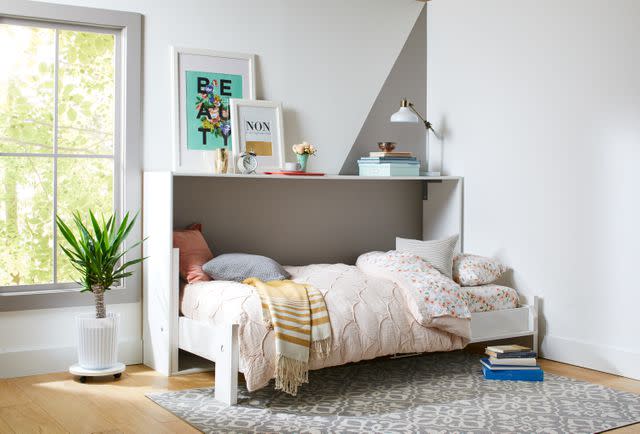What Is a Murphy Bed? Pros and Cons to Know
Here’s a look at Murphy beds and why they might be just the space-saving sleep solution your home needs.

David Greer
Usable space is a precious commodity in any home. This is why innovative and multi-functional furniture solutions are worth their weight in gold. Hence, why the Murphy bed is making a much-needed comeback. When not in use, this timeless invention is designed to fold away seamlessly into a wall or cabinet. It is a versatile and space-saving alternative to traditional beds. Whether in small spaces, mobile homes, guest rooms, or kids’ rooms, a Murphy bed allows you to turn sleeping quarters into multifunctional spaces. Here’s a look at the pros and cons of a Murphy bed, where it is best placed in your home, and the does and don’ts of installation.
Related: The 8 Best Murphy Beds of 2023 to Save You a Ton of Space
What Is a Murphy Bed?
The Murphy bed is also known as a wall bed, fold-down bed, or pull-out bed. It was invented in the early 20th century by William Lawrence Murphy, who was looking for a way to maximize the small living space. The original Murphy bed was a simple folding bed that pulled down from a closet-like structure and folded back up when not in use.
Nowadays, they can also be tucked away seamlessly inside a wall or cabinet. Murphy beds come in various styles and designs. From traditional to modern, they can be customized to fit any decor. They are available in twin, full, queen, and even king sizes. And they can be made from a variety of materials, including wood, metal, or upholstered fabrics. Solid wood is heavy, but it can be ideal for more stately spaces. Manufactured wood is lighter but bears less weight. Metal frames are durable but can be noisier than wood materials. To add visual appeal to the space, you can add shelving and other aesthetic upgrades on both sides of the bed.
Today, many Murphy beds include design elements like shelves for decoration or storage. Some even have built-in lighting for greater ease and enjoyment. While Murphy beds can be expensive, they offer a comfortable and customizable sleeping space that maximizes valuable floor space. They should be professionally installed to ensure that the weight and balance will endure for years to come. Whether you’re hoping to turn your guest bedroom into a workout studio or your studio apartment into a functioning office, Murphy beds make single-use spaces much more versatile and adaptable over the life of your home.
What Are the Pros of a Murphy Bed?
The space-saving pros of a Murphy bed are obvious. In small apartments or homes, Murphy beds are ideal. Even if you have the available floor space, Murphy beds make for a minimalist and modern look in any home.
If you were considering a convertible couch or futon, you might find the Murphy bed a superior alternative. The mattress quality and sturdy support system spell better sleep. They can be customized to fit any decor and can be made to blend in with the materials already in a room.
What Are the Cons of a Murphy Bed?
On the other hand, one major con of a Murphy bed can be price. They can be quite expensive to custom-design and install. Since most are high-end models or custom-built, it is harder to find a bargain. The price further increases when you factor in the cost of professional installation.
Depending on how often you plan to use the Murphy bed, the price might not be worth it. There are less expensive alternatives available, such as futons, sofa sleepers, hammocks, recliners, air mattresses, trundle beds, loft beds, or bunk beds. A Murphy bed can require lots of wall space, which might encroach on the square footage inside a room. You may have to rearrange furniture regularly to accommodate it, and you’ll also have to consider where you’ll store bedding each time you need to use it.
Last, Murphy beds can be dangerous if not used properly. Kids should never raise or lower them by themselves. They also may be difficult to maneuver for people with mobility limitations or orthopedic pain.

Carson Downing
Where Can a Murphy Bed be Installed?
Murphy beds can be installed in various areas of your home, depending on your needs and available space. Some popular options are guest rooms, offices, or playrooms.
In small spaces, a Murphy bed can free up valuable floor space during the day, making the space feel larger. Also, they are a great option for a child's bedroom, allowing them to have more play space during the day.
Essentially, it can be placed anywhere that you have sufficient space to accommodate it when it is fully unfurled. Consider the size of the bed (king, queen, single), the weight it must support, and the material of the bed. You don’t want problems raising and lowering it, so consider using hydraulic systems that can lighten the load. The floor-to-ceiling height is important, but you may be able to store a Murphy bed horizontally instead.
Should Installation be a DIY Project or a Professional Job?
While a DIY Murphy bed project is possible, it’s unrealistic for most homeowners. If you’re new to carpentry and handiwork, it is best to leave this job to the pros.
Installing a Murphy bed is a complex process that requires time and practice to make sure the bed is safe and secure. Of course, a small mistake could spell big injuries or ill-fitting furniture.
The installation process involves working with a professional designer to create a custom Murphy bed that fits your space. After the bed, cabinets, and any accompanying hardware have been made offsite, the installation team will bring these items to your home and start placing reinforcements, bolts, brackets, and hinges in place to support the bed. All of these need to be done with precision to ensure everything is properly and securely installed.
Once the bed is installed, any finishing touches, such as trim or paint, will be added to blend the bed seamlessly with your decor.
For more Better Homes & Gardens news, make sure to sign up for our newsletter!
Read the original article on Better Homes & Gardens.

